
Yves right here. Whereas this research has an attention-grabbing goal, of looking for to measure modifications in apparel and hair kinds as a proxy for model conformity, I’ve doubts about highschool yearbooks within the Nineteen Sixties and Nineteen Seventies being nice proxies. There was an excessive amount of resistance in colleges to stress-free costume codes; recall ladies sporting skirts above the knee (when miniskirts had been in vogue within the Nineteen Sixties and the unique Star Trek confirmed quite a lot of leg) was usually verboten, together with pants, and denims had been completely not permitted as college apparel.
Word particularly that this research makes use of 1966 yearbooks displaying boys in fits and conservative haircuts.
My father graduated from Harvard Enterprise Faculty in 1965 and was the oldest member of his class. Once I was cleansing out the home final yr, I discovered a enterprise college image of him from his part. It appeared like a photograph of an examination. My father and 4 classmates had been within the shot, all in profile. My father was in a swimsuit and had quick cropped hair. The opposite males had sideburns and lengthy hair and had been dressed as in the event that they had been auditioning to hitch the Beatles.
By David Yanagizawa-Drott, Professor of Improvement and Rising Markets within the Division of Economics College Of Zurich. Initially revealed at VoxEU
Model decisions are an vital dimension of tradition and are sometimes used to exhibit individualism or belonging to a bunch. This column makes use of over 14 million pictures from highschool yearbooks to trace cultural change within the US over area and time. Model traits of women and men converged from the Nineteen Sixties onwards, pushed by increased individualism and decrease model persistence for males. Moreover, it reveals that novel model improvements predict patenting charges, suggesting that cultural change can facilitate innovation in different areas later in life.
Image your self strolling by way of the hallways of a Fifties American highschool. The scene is a sea of conformity: boys with crew cuts, many sporting jackets and ties, whereas ladies don demure clothes and completely coiffed hairdos. Quick ahead to in the present day, and also you be greeted by a kaleidoscope of colors, hairstyles, and vogue decisions that may make your head spin. This stark distinction serves as a potent reminder that tradition is excess of only a set of beliefs and attitudes – it’s a lifestyle, continually evolving and shaping society.
Latest years have seen appreciable progress in analysing tradition as a ‘lifestyle’, utilizing information on consumption patterns, folklore, and naming patterns (Bazzi et al. 2020, Michalopoulos and Xue 2021, Atkin 2016). To analyse model decisions as a key dimension of tradition, we want two issues – information, and a approach to make them communicate. In our research (Voth and Yanagizawa-Drott 2024), we use portrait photographs of highschool seniors within the US, 1950-2010, to trace cultural change. The concept of utilizing images as a window into social tendencies will not be new. Francis Galton, the Victorian polymath, infamously used composite pictures to create ‘archetypal’ faces of criminals and prostitutes (Galton 1878). Because of the wonders of machine studying, we will analyse cultural shifts on an unprecedented scale. In an vital latest research, Adukia et al. (2022) used pictures in kids’s books to hint racial stereotypes. In our research, we study greater than 14 million pictures from 111,000 highschool yearbooks to trace model decisions over time and area.
We use three fundamental ideas: individualism (what number of college students inside every highschool dare to have a special model from their friends), persistence (similarity between current kinds and people of 20 years prior), and model novelty (the emergence of beforehand unseen model decisions). Think about Determine 1, displaying portraits of graduating seniors from Attica Excessive Faculty in New York in 1966. We will see that they put on very related garments – darkish swimsuit, tie, collared shirt, no facial hair. We calculate a excessive measure of similarity based mostly on their model decisions of 0.9. The identical model of calculation underlies our persistence evaluation. We evaluate cohorts with graduates from the identical college 20 years earlier (Determine 2). In panel A, we’ve low persistence – model decisions modified dramatically. In panel B, variations are a lot smaller, apart from some extra exuberant bow ties and longer hair. Accordingly, we calculate a excessive persistence rating.
Determine 1 Individualism calculation
 <
<
Notes: This determine illustrates the calculation of the individualism rating. For particular person i, it’s calculated as (1-mean cosine similarity) when put next with all the photographs of different seniors with the identical gender in the identical highschool cohort. The rating for the person on the left is 0.098, indicating a low degree of individualism, since most model decisions (swimsuit, hair, tie) are related.
These indicators enable us to color an enchanting image of cultural evolution in post-war America. Determine 3 provides an outline. The primary message is that model traits of women and men converged from the mid-60s onwards, as the ladies’s rights motion erupted and outdated function fashions had been laid to relaxation. Each individualism and persistence ranges converged by the Nineteen Nineties.
Males began out within the Fifties and early Nineteen Sixties with low individualism. They principally appeared like their dad and mom, 20 years earlier. However as Bob Dylan prophesied, the instances they had been a-changin’. This equilibrium spectacularly collapsed within the late Nineteen Sixties, with individualism surging. Within the following a long time, individualism continued to fluctuate round a rising development.
In distinction, girls began off with quite a lot of within-class variation (‘individualism’), after which noticed a decline from the Nineteen Sixties onwards. On the identical time, persistence started to rise from the late Eighties, approaching male ranges. Each genders skilled a marked improve in model innovation. Male model novelty exploded within the late Nineteen Sixties, and each genders reached unprecedented ranges by 2010.
Determine 2 Persistence
a) Low persistence instance
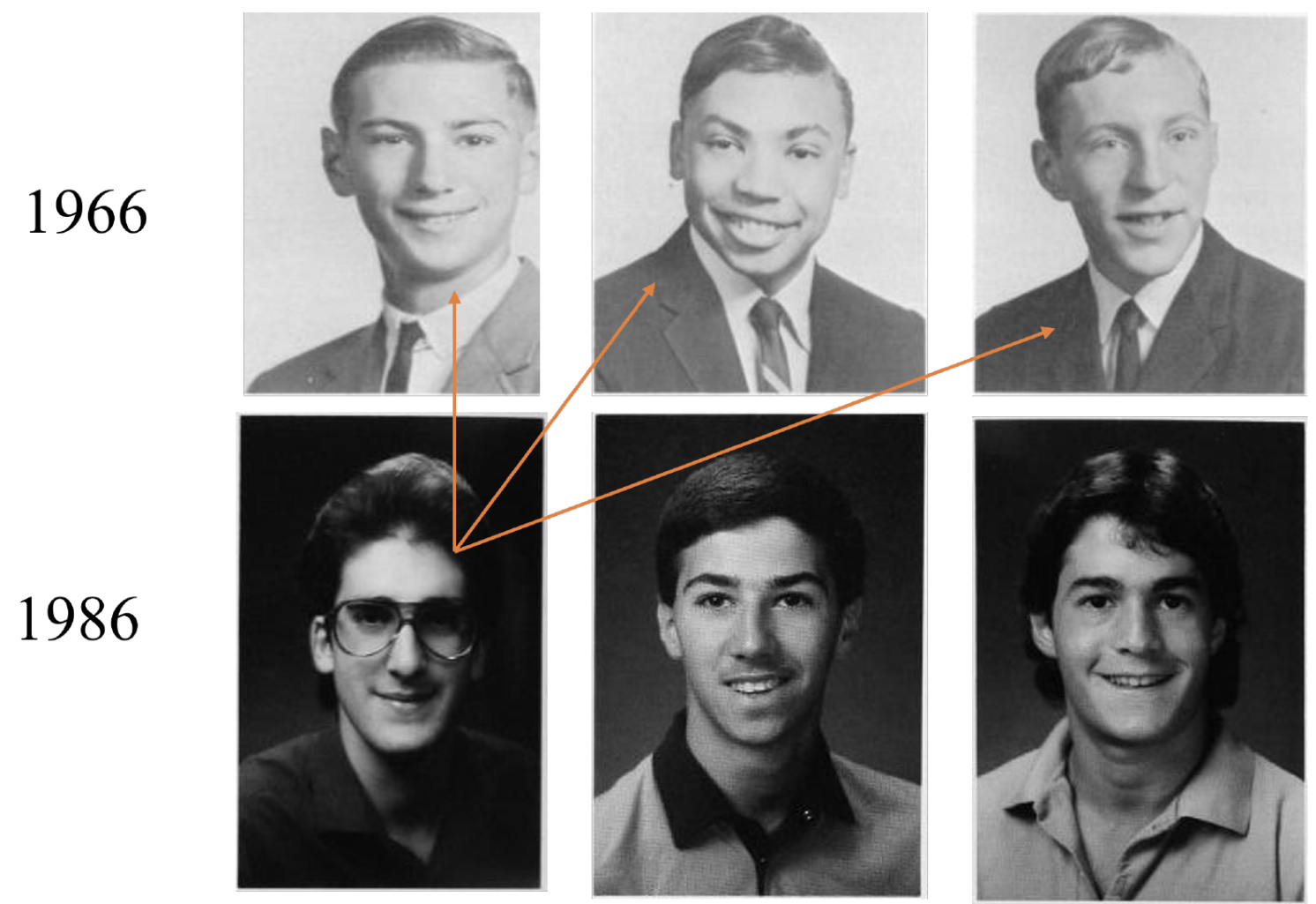
b) Excessive persistence instance
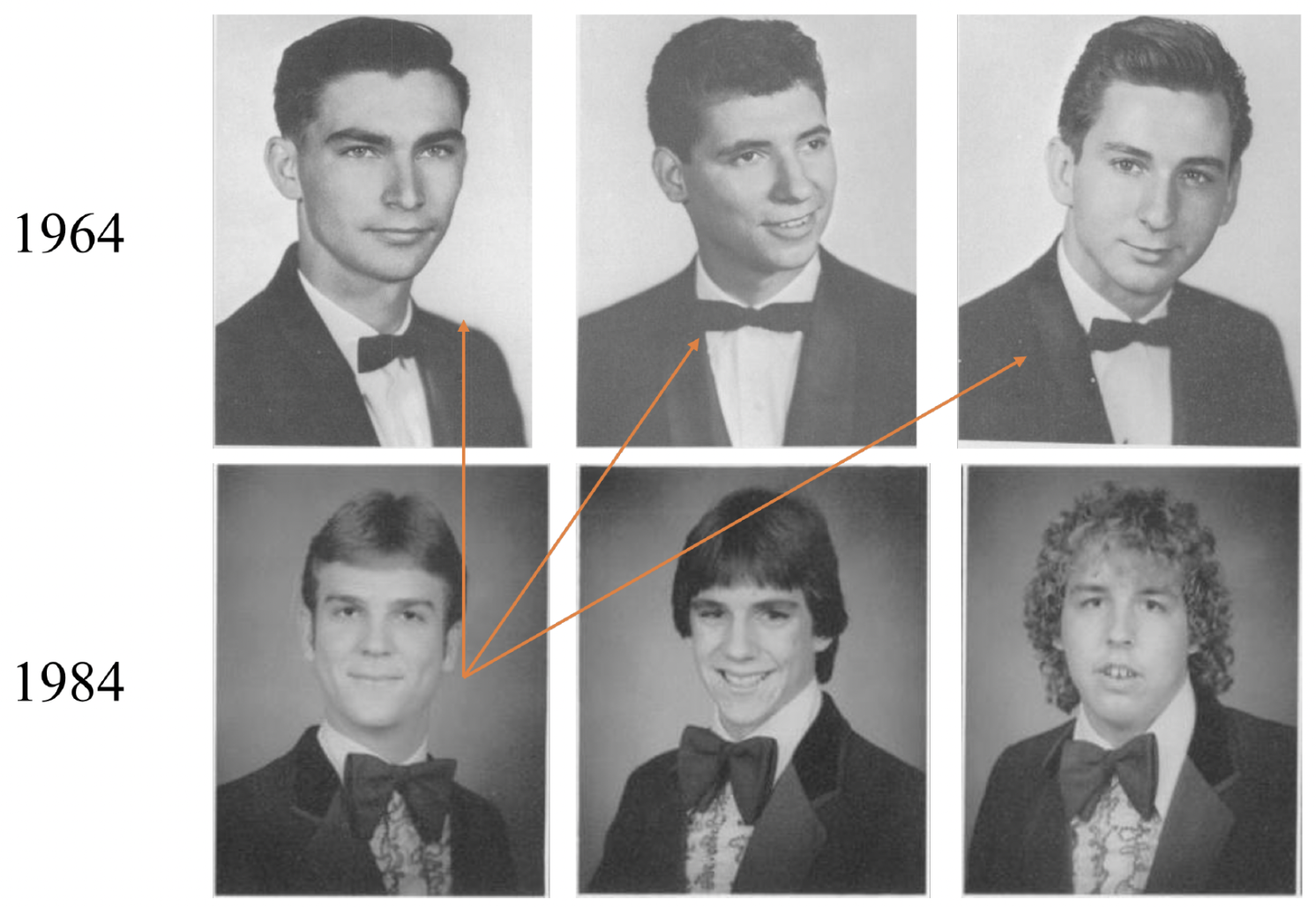
Notes: The determine illustrates the calculation of persistence scores. We calculate the similarity of everybody in a cohort, evaluating every of them with the model of graduates 20 years earlier (of the identical gender). We then common this rating for the cohort. Panel (a) is an instance of low persistence (0.056). Panel (b) is an instance of excessive persistence (0.83).
We discover excessive and uniform ranges of individualism and persistence in the course of the Fifties and throughout colleges. By the Eighties, nonetheless, a stark divide started to emerge. Faculties turned polarised, with some clinging to conformity whereas others embraced individuality with gusto. Maybe unsurprisingly, a lot of the outdated South remained a bastion of favor conformity.
Determine 3 Individualism, persistence, and elegance novelty over time
a) Individualism
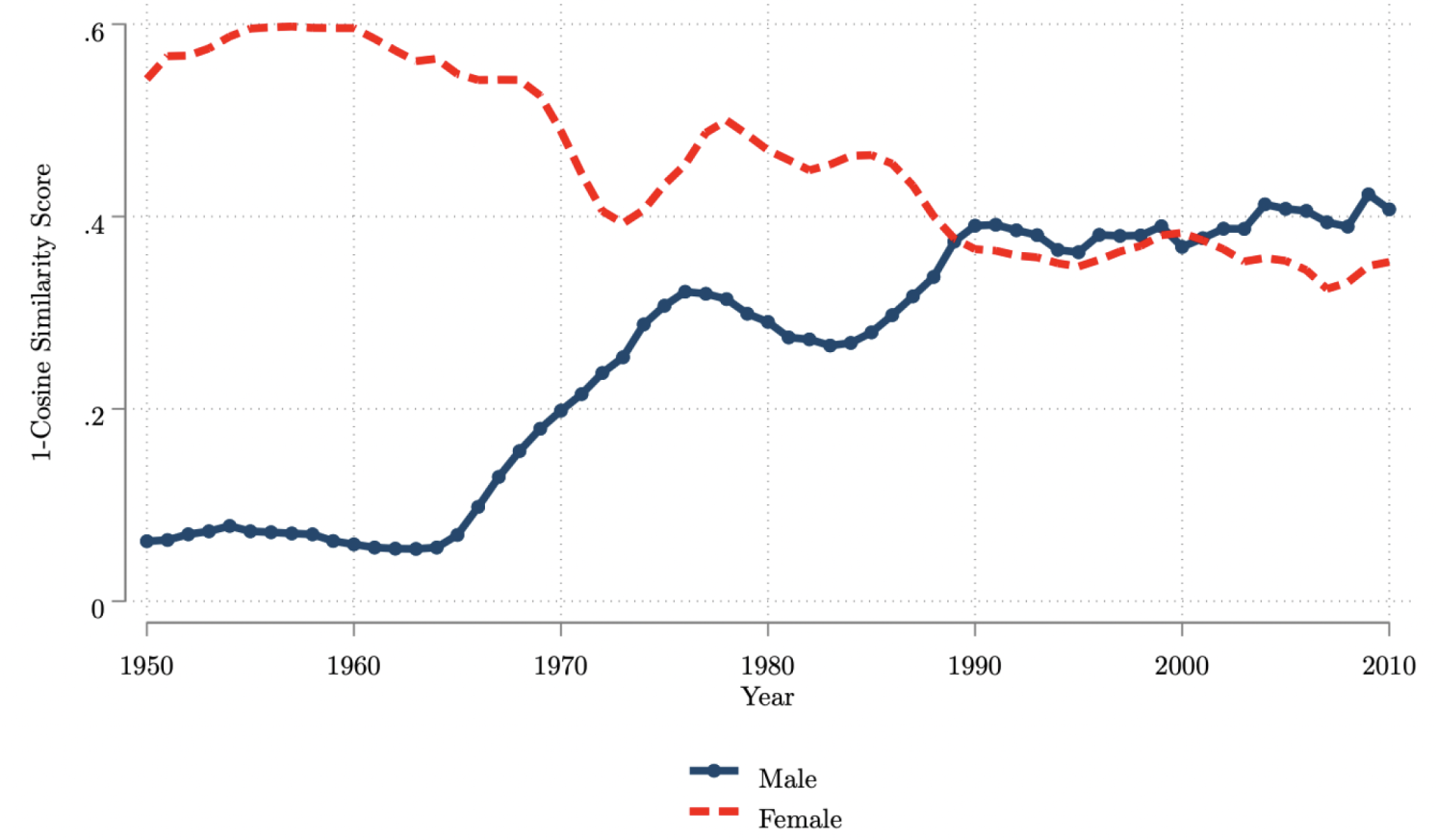
b) Persistence
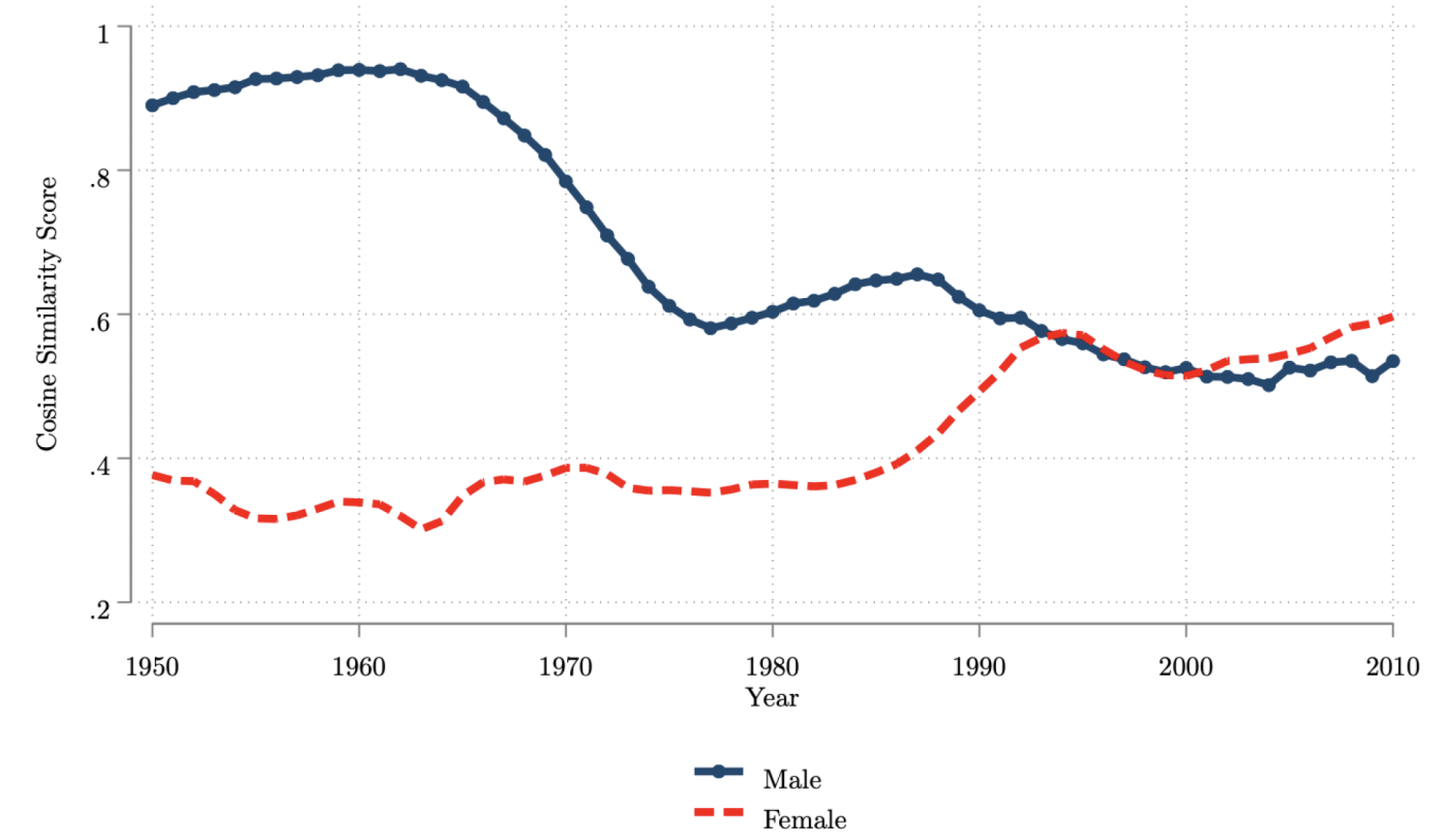
c) Model novelty
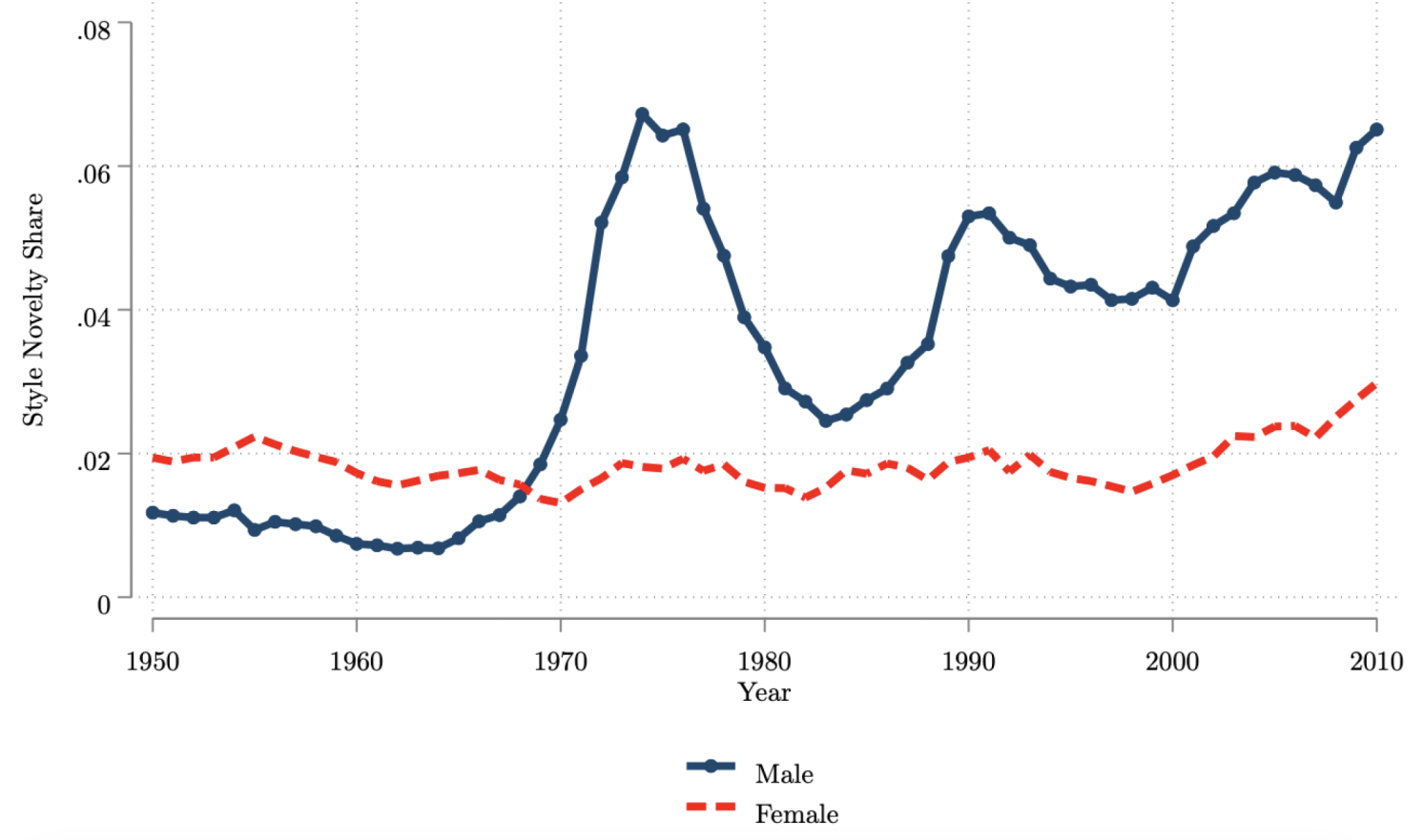
Notes: This determine plots yearly common cosine (for persistence) and 1-cosine (for individualism) scores for individualism (Panel A) and persistence (Panel B); Panel C plots the share of favor innovators. Averages come from our picture degree dataset (14.5 million observations), break up by gender.
Determine 4 Individualism over time
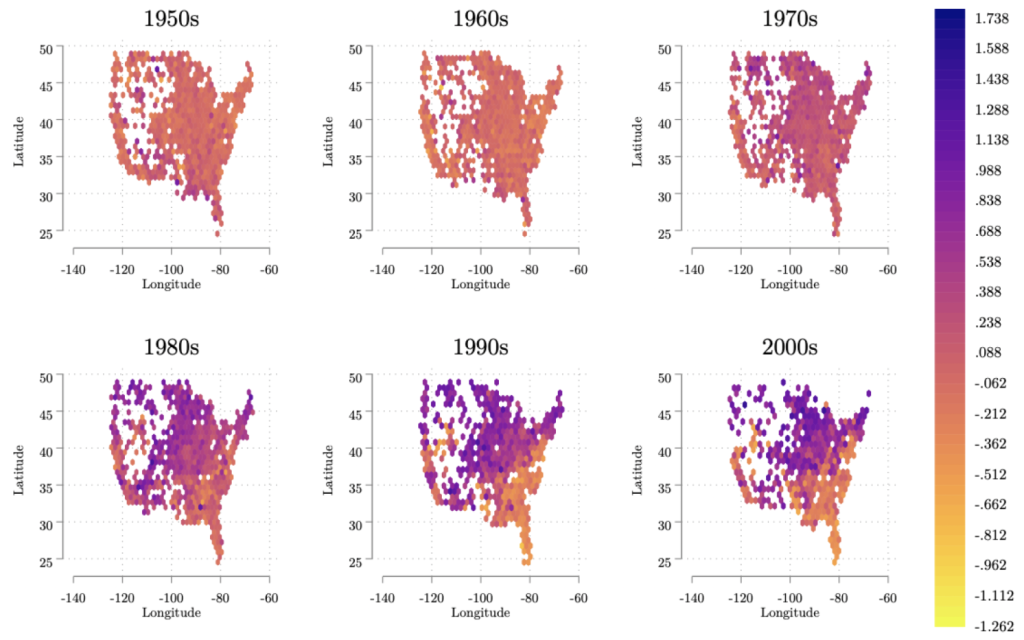
Does any of this matter past the realm of vogue and hairstyles? Ought to economists care about necklines and ties in highschool yearbooks? Because it seems, there are probably some vital financial implications. We study whether or not model novelty goes hand in hand with technological innovation. To repair concepts, think about the case of 1 1972 Cupertino highschool graduate – Steve Jobs. Jobs seems with bow tie and tuxedo, sporting lengthy hair and no beard or moustache. At this cut-off date, fewer than 0.3% of US male graduates had ever worn this model, qualifying him for the ‘model innovator’ class. Jobs additionally went on to use for 1,114 patents, of which 960 had been granted.
To see if the case of Jobs generalises on the degree of the highschool, we fastidiously match model innovation in a commuting zone with patenting charges of these born in that commuting zone, 18 years prior (utilizing information from Bell et al. 2019). Monitoring their profitable innovation later in life, we discover that areas with extra model innovation additionally see higher patenting. Determine 5 reveals the outcomes – in yearly after commencement, college students from excessive colleges in areas with model innovators are markedly extra prone to apply for (and obtain) patents. Whereas handing out earrings to boys and slicing Mohawks won’t essentially increase technological creativity, colleges that let one in every of these model improvements might effectively additionally produce graduates that excel on the different. Provided that innovation is a key driver of financial progress, these findings counsel that rising up in an surroundings with a little bit rise up in a single’s youth may pay vital dividends down the road.
Determine 5 Patenting in commuting zones with and with out model innovators, by yr since commencement

So, the following time you flip by way of an outdated yearbook and chuckle on the outdated kinds, keep in mind: you aren’t simply a sequence of vogue oddities and humorous expressions, but additionally at an vital dimension of cultural evolution – and one that may have a severe impression on the tempo of technological change.
See unique publish for reference
